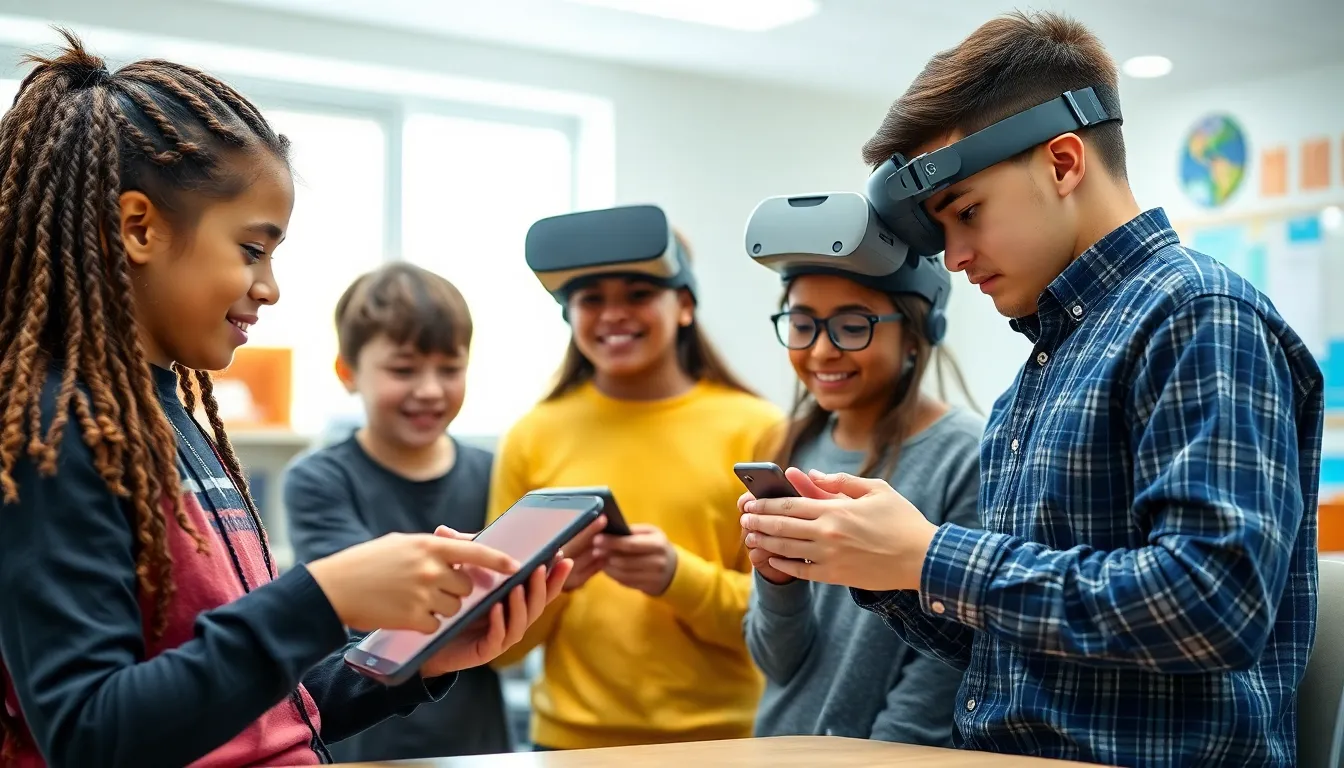In a world where even your grandma can video call you from her smartphone, it’s time for education to catch up. Enter edtech solutions, the superheroes of the classroom, swooping in to save the day from outdated teaching methods. These innovative tools don’t just add a dash of fun; they transform learning into an engaging adventure that students actually look forward to.
Table of Contents
ToggleUnderstanding Edtech Solutions
Edtech solutions encompass a variety of technologies designed to enhance learning experiences. These tools facilitate interactions between students and educators while streamlining educational processes.
Definition of Edtech Solutions
Edtech solutions refer to technological tools that support teaching and learning. They include software, applications, and platforms that foster collaborative learning. Examples of these solutions feature learning management systems, virtual classrooms, and educational apps. Each tool serves specific educational needs, promoting personalized learning. Institutions utilize these technologies to increase engagement and improve outcomes.
Importance in Modern Education
Innovative edtech solutions play a critical role in today’s educational landscape. They enhance accessibility, enabling students to learn from anywhere and at any time. Engagement levels increase as interactive elements spark interest and motivation among learners. Teachers benefit from data analytics, which inform instruction and track student progress. Adoption of these technologies also supports diverse learning styles, catering to individual student needs. Ultimately, integrating edtech into curricula transforms traditional education models into dynamic learning environments.
Types of Edtech Solutions

Edtech solutions encompass various technologies enhancing educational experiences. These include tools designed to facilitate learning, increase engagement, and support personalized instruction.
Learning Management Systems (LMS)
Learning Management Systems serve as centralized platforms for educational content delivery. These systems streamline course management by providing features like assignment submissions, grading, and tracking student progress. Educators can customize LMS environments to suit their curriculum needs. Popular examples include Canvas and Moodle, which offer user-friendly interfaces and robust analytics. Analytics within LMS platforms help educators make data-informed decisions to enhance student learning outcomes.
Mobile Learning Applications
Mobile Learning Applications enable education on the go. These apps offer flexibility, allowing students to access learning materials anytime, anywhere. They facilitate personalized learning experiences through interactive content and gamification elements. For instance, Duolingo helps users learn languages through engaging activities. Such applications enhance student motivation and retention by integrating features like quizzes, progress tracking, and social interaction. Educators also use these tools to assign resources and track engagement metrics.
Virtual and Augmented Reality Tools
Virtual and Augmented Reality Tools transform traditional learning into immersive experiences. With VR, students can explore historical events or conduct virtual science experiments. AR enhances textbooks by overlaying digital content in real-world contexts. Tools like Google Expeditions and Merge Cube provide engaging environments for deep exploration of subjects. These technologies promote experiential learning, capturing students’ attention and improving information retention. Incorporating VR and AR into curricula creates opportunities for interactive and memorable educational experiences.
Benefits of Implementing Edtech Solutions
Implementing edtech solutions brings significant advantages to the educational landscape. These benefits enhance both teaching and learning experiences.
Enhanced Student Engagement
Edtech solutions actively engage students by incorporating interactive elements into lessons. Gamification features capture attention, motivating students to participate and learn. Collaborative tools foster communication among peers, encouraging teamwork. Moreover, multimedia resources enrich learning materials, making complex topics more accessible and enjoyable. As a result, classrooms become dynamic environments where students look forward to participation.
Customized Learning Experiences
Customized learning experiences stand out as a major benefit of edtech. Adaptive technologies assess individual learner needs and offer content tailored to varying skill levels. Personalized learning paths ensure that each student progresses at their own pace, reducing frustration and promoting mastery. Additionally, educators can easily modify lessons based on real-time data analytics, allowing for responsive adjustments to support unique learning styles. This flexibility empowers students to take ownership of their education.
Accessibility and Inclusivity
Accessibility and inclusivity are essential components of modern education. Edtech solutions provide resources that cater to diverse learning abilities and backgrounds. Features like text-to-speech, closed captioning, and adjustable font sizes make educational materials more inclusive. Furthermore, online platforms break geographic barriers, allowing remote learners to access the same high-quality resources as their peers. This fosters a more equitable educational environment where all students can thrive.
Challenges in Edtech Adoption
Adoption of edtech solutions presents various challenges that educational institutions must navigate to maximize benefits.
Technology Integration Issues
Integration of new technologies can pose significant obstacles. Schools often struggle with compatibility between existing infrastructure and new tools. Moreover, updates may disrupt ongoing systems, leading to additional complications. Many educators find it difficult to adapt their teaching practices to incorporate these technologies effectively. Support from IT departments is essential, yet often insufficient. Institutions may need to invest in infrastructure improvements to facilitate smoother integration processes.
Training and Support for Educators
Adequate training plays a critical role in the successful implementation of edtech solutions. Educators frequently express the need for ongoing professional development to navigate these tools effectively. Many programs offer initial training, but lack of continuous support creates challenges in fully utilizing available resources. Educator familiarity with technology directly impacts student engagement and learning outcomes. Collaboration among teachers also enhances the learning curve, yet institutional encouragement is vital for creating a supportive environment.
Budget Constraints
Budget limitations significantly affect the adoption of edtech solutions. Many schools encounter difficulties in allocating funds for necessary technologies and training programs. Often, competing priorities prevent institutions from investing in innovative resources. Grants and funding options can help, but these channels may not provide sufficient support for long-term integration. Cost-effectiveness of chosen solutions plays a crucial role in decision-making processes. Without proper financial planning, schools struggle to maintain updated technologies, limiting overall educational advancement.
Embracing edtech solutions is essential for modernizing education and meeting the diverse needs of today’s learners. These innovative tools not only enhance engagement and accessibility but also provide educators with valuable insights to inform their teaching strategies.
As institutions navigate the challenges of integrating technology into their curricula, the potential benefits far outweigh the obstacles. By prioritizing training and support, schools can create dynamic learning environments that foster collaboration and personalized experiences.
Ultimately, the successful implementation of edtech solutions paves the way for a more inclusive and effective educational landscape, where all students can thrive and reach their full potential.




